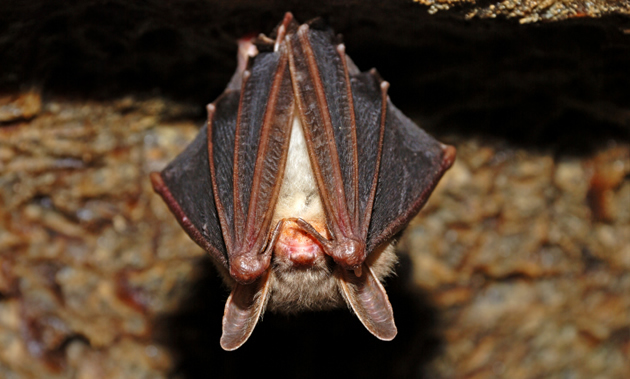Bats: important to Kootenay communities

Common cultural lore that bats are scary and evil is worth reconsidering. — Eduard Kyslynskyy/photos.com
Bats get tangled in hair, right? They’re blind. They’re rodents. They suck your blood.
In fact, all these beliefs are simply myth. Bats are actually mammals with good eyesight and the ability to navigate by echolocation—sounds bouncing off objects. They’re also very important for pollination and help keep mosquitos at bay, often eating their own body weight of the pesky insects in a single night. Yet many of B.C.’s bat species are threatened or vulnerable. With the deadly White Nose Syndrome moving in from the east, it’s becoming even more important to learn to protect these indicator species.
The Kootenay Community Bat Project has been working for almost a decade to promote education, research and conservation of bats.
There are at least 11 species of bats in the Kootenays including vulnerable and threatened species like the Townsend’s big-eared bat, fringed bat, northern myotis and little brown myotis. The Kootenay Community Bat Project provided the first recorded inventory of bats in the Slocan Valley and the first community-based bat inventory and conservation project in B.C. It has inspired the Okanagan Community Bat Project (2007) and the South Coast Bat Action Team. To date, the project has conducted almost 400 site visits and identified over 280 roost sites for eight species of bats. -Kootenay Community Bat Project
The website for the Kootenay Community Bat Project provides helpful links and a number of ideas for ways to get involved from volunteering for a bat count to dealing with bat habitat or installing houses. Bats have plenty of challenges ahead. Some education and human help instead of fear can go a long way towards keeping these little pollinating mosquito-eaters as an important part of our ecology.






Comments